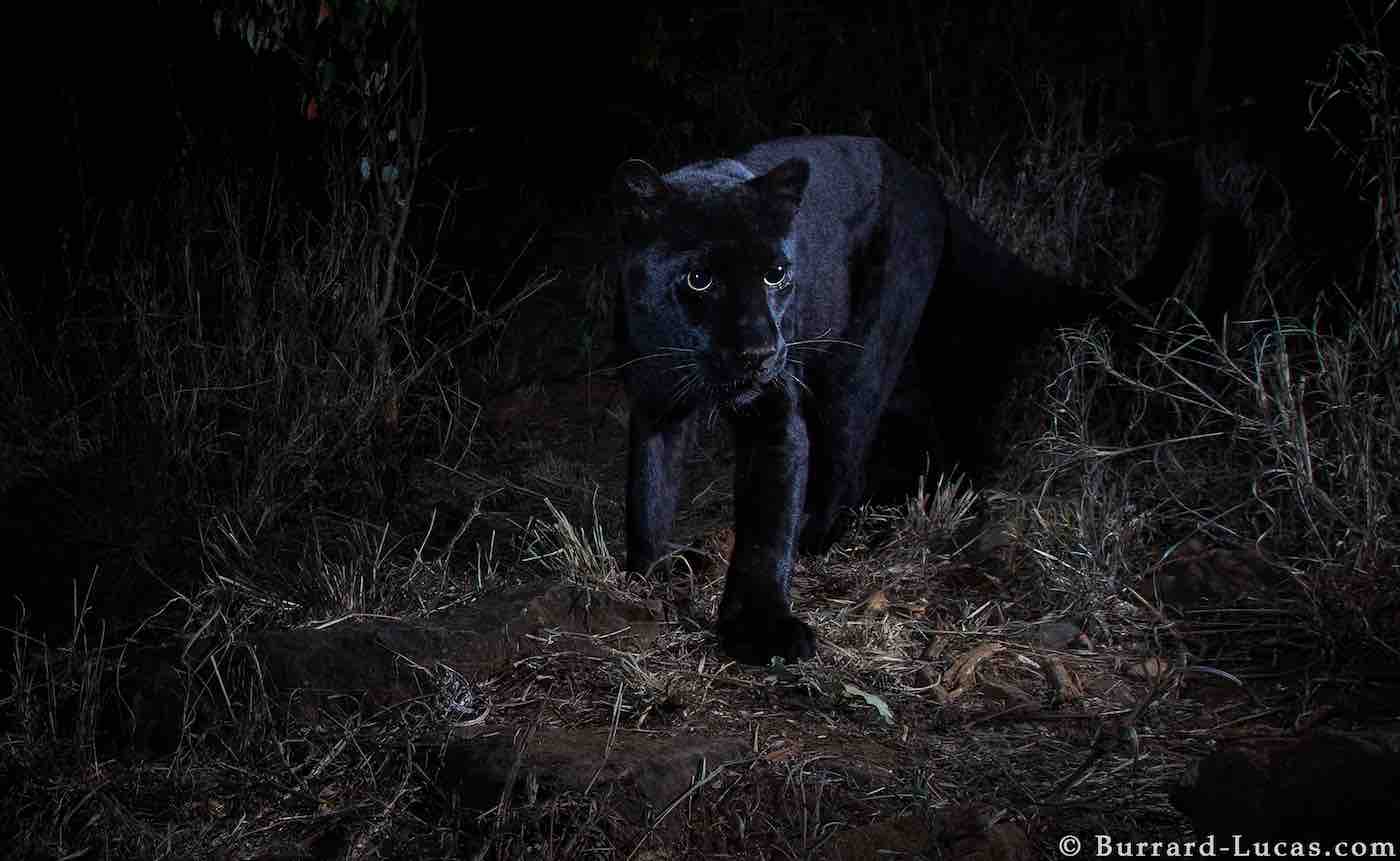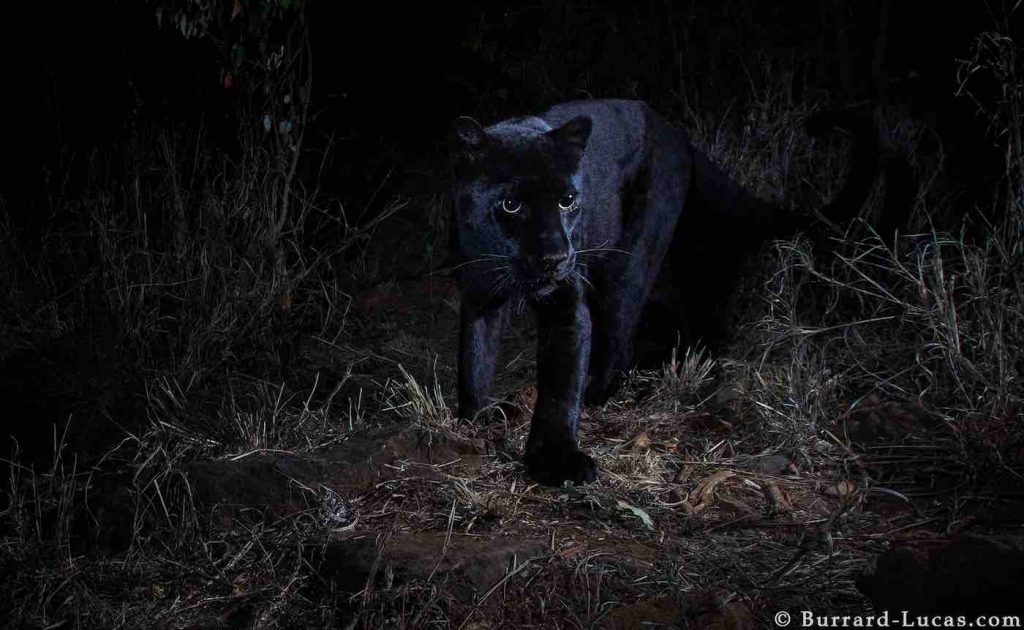
It has been a little over 100 years since there was scientific documentation of black leopards in Africa – but now, a stunning set of photos has confirmed their existence in Kenya.
Black leopards, also known as super-rare melanistic leopards, experience a genetic condition that is considered to be the opposite of albinism. Upon close inspection, their coats still feature the iconic spotted leopard pattern, but the rest of their fur is a dark inky black.
Since their coats help them to blend into denser forested surroundings, black leopards have primarily been sighted in Southeast Asia, and they are rarely seen in Africa. Though there have been a few reported sightings across the continent, the last photo of a black leopard was taken in 1909.
Wildlife photographer Will Burrard-Lucas had always dreamt of capturing a photo of the legendary big cats, but their scarcity made his fantasy seem like a pipe dream.
MORE: ‘Never seen anything like it’ – Watch Ferry Passenger’s Stunning Footage of 200 Frolicking Dolphins
“Since childhood I have been fascinated by stories of black panthers,” Burrard-Lucas wrote in a blog post. “For me, no animal is shrouded in more mystery, no animal more elusive, and no animal more beautiful. For many years, they remained the stuff of dreams and of farfetched stories told around the campfire at night. Nobody I knew had ever seen one in the wild and I never thought that I would either.”
Then, he caught wind of some black leopard sightings in Kenya – and he knew he had to try and snap a photo of the elusive wildcat.
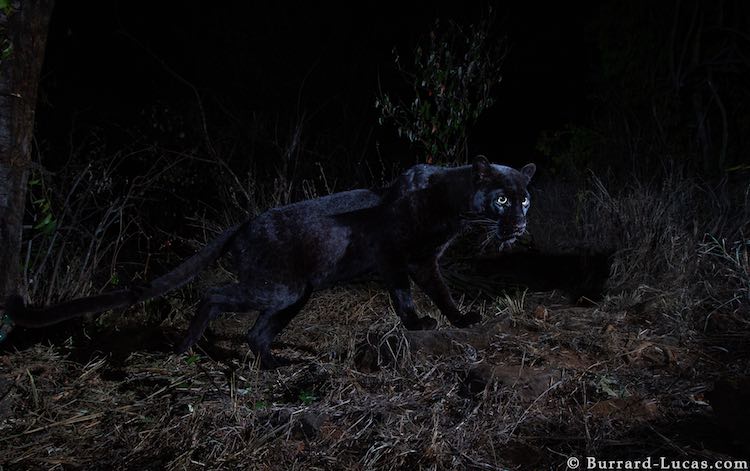
Burrard-Lucas traveled to Laikipia Wilderness Camp and – with the help of researchers from the San Diego Zoo – he set up several high-definition Camtraption motion sensor camera traps.
For several nights, he left the camera traps erected on a nearby leopard path. When he finally checked his cameras, he was stunned by what they had captured.
MORE: Watch the Badass Footage of Africa’s First All-Female Anti-Poaching Team in Action
“As I scrolled through the images on the back of the camera, I paused and peered at the photograph below in incomprehension… a pair of eyes surrounded by inky darkness… a black leopard!” wrote Burrard-Lucas. “I couldn’t believe it and it took a few days before it sank in that I had achieved my dream.”
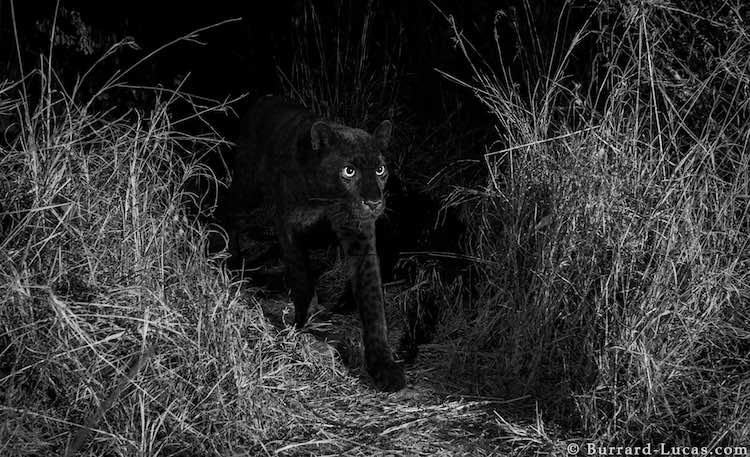
“Over the days that followed I moved the camera traps around as I gained a deeper understanding of the leopard’s movements. The next hit I got was further down on the same game trail as the first capture. I love the way this cat melts out of the darkness!”
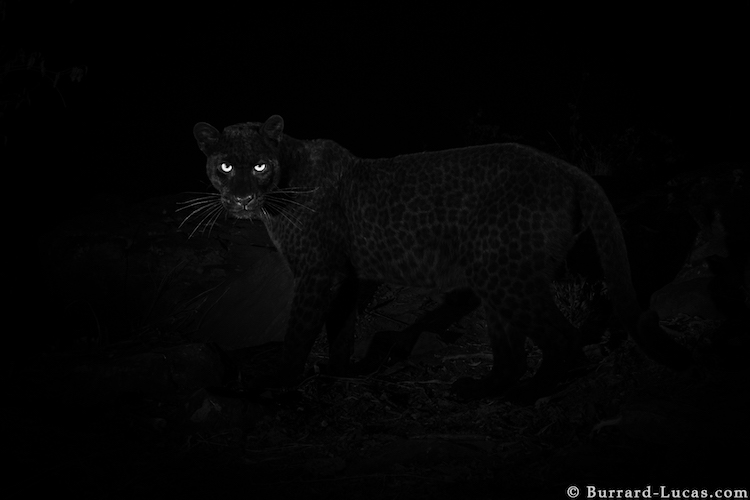
“Thereafter the black leopard disappeared and I started capturing images of a big spotty male instead – apparently he had chased away the younger black leopard. I have never been annoyed at capturing a spotty leopard on camera trap before! I suppose at least he was rather handsome…”
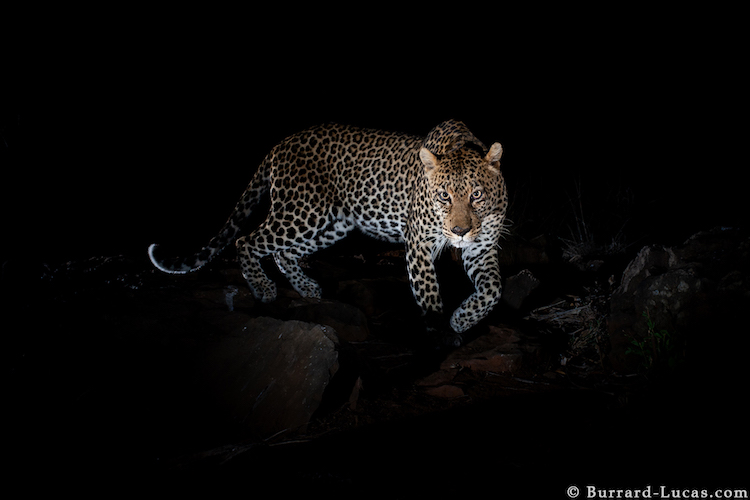
“Then, on the night of the full moon, the black leopard reappeared and I captured the shot below as the moon was setting behind a ridge,” added Burrard-Lucas in his blog post. “Needless to say, I was thrilled that he was back and that I had captured such an atmospheric image.”
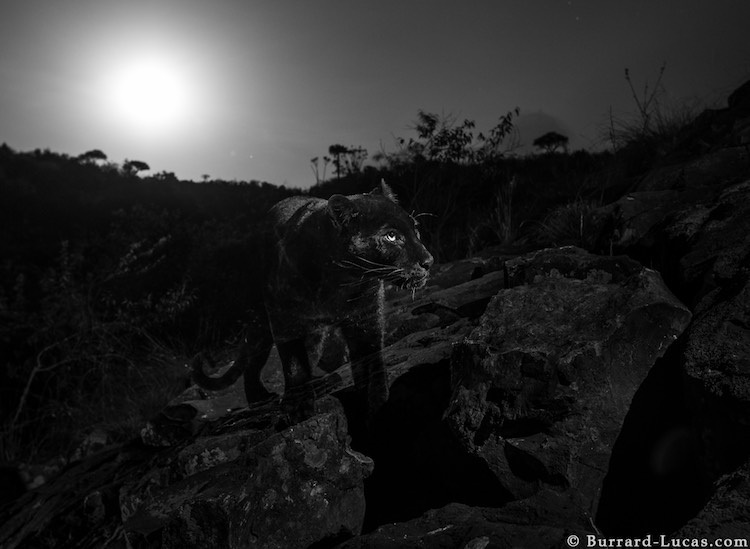
Though Burrard-Lucas says that these are not the first photos taken of a black leopard in the last century, he says that his images, along with footage that was captured by the San Diego Zoo, is the first confirmed scientific documentation of the leopard in over 100 years.
The San Diego Zoo findings were published in the African Journal of Ecology last month.
The photograph says that some readers have voiced their concern for the black leopard over the risk of poaching, but he has emphasized that poaching is illegal in Kenya and its wildlife is well-protected. Additionally, he hopes that disclosing his location will encourage tourism in the area, thereby supporting local communities and economies.
In the mean time, Burrard-Lucas is already planning a return trip to Kenya in order to capture more photos of the awe-inspiring big cat.
Be Sure And Share This Stunning Story With Your Friends On Social Media…




















